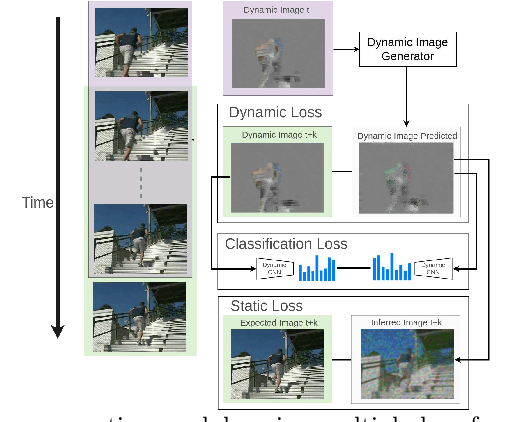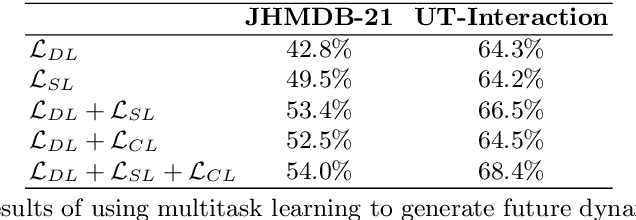Action Anticipation By Predicting Future Dynamic Images
Paper and Code
Aug 01, 2018



Human action-anticipation methods predict what is the future action by observing only a few portion of an action in progress. This is critical for applications where computers have to react to human actions as early as possible such as autonomous driving, human-robotic interaction, assistive robotics among others. In this paper, we present a method for human action anticipation by predicting the most plausible future human motion. We represent human motion using Dynamic Images and make use of tailored loss functions to encourage a generative model to produce accurate future motion prediction. Our method outperforms the currently best performing action-anticipation methods by 4% on JHMDB-21, 5.2% on UT-Interaction and 5.1% on UCF 101-24 benchmarks.
 Add to Chrome
Add to Chrome Add to Firefox
Add to Firefox Add to Edge
Add to Edge